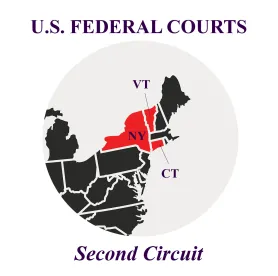Addressing fair use as an affirmative defense to copyright infringement, the US Court of Appeals for the Second Circuit amended its recent opinion, reversing a district court’s summary judgment in favor of fair use. The Court did not change its original judgment but took the opportunity to address the recent Supreme Court of the United States precedent in Google v. Oracle. The Andy Warhol Foundation for the Visual Arts, Inc. v. Lynn Goldsmith, Lynn Goldsmith, Ltd., Docket No. 19-2420-cv (2d Cir., Aug. 24, 2021) (Lynch, J.) (Jacobs, J., concurring).
Lynn Goldsmith and Lynn Goldsmith, Ltd. (collectively, LGL) appealed from a district court judgment that granted summary judgment to The Andy Warhol Foundation for the Visual Arts, Inc. (AWF) on its complaint for a declaratory judgment of fair use and dismissing defendants-appellants’ counterclaim for copyright infringement. The Second Circuit reversed and remanded for further proceedings.
In 1984, LGL’s agency licensed her 1981 photograph of Prince to Vanity Fair for use as an artist reference for creating a rendering of Prince to accompany Vanity Fair‘s profile of the artist. What LGL did not learn until more than 30 years later, shortly after Prince’s untimely death, was that the artist commissioned by Vanity Fair to create the Prince drawing was Andy Warhol and that Warhol had used the photograph to create an additional 15 silkscreen prints and illustrations, known as the Prince Series. In 2017, LGL notified AWF, as the successor to Warhol’s copyright in the Prince Series, of her claims of copyright infringement. AWF responded with a lawsuit seeking a declaratory judgment that the Prince Series works were non-infringing, or, in the alternative, qualified as fair use of LGL’s photograph. LGL countersued for infringement. Relying on the Second Circuit’s 2013 holding in the copyright case Cariou v. Prince, the district court granted summary judgment to AWF, agreeing with its assertion of fair use and considering the Warhol work to be “transformative” of the original.
LGL’s appeal required the Second Circuit to consider the four fair use factors under §107 of the Copyright Act:
-
The purpose and character of the use, including whether such use is of a commercial nature or is for nonprofit educational purposes
-
The nature of the copyrighted work
-
The amount and substantiality of the portion used in relation to the copyrighted work as a whole
-
The effect of the use upon the potential market for, or value of, the copyrighted work.
In its March 2021 opinion, the Second Circuit rejected AWF’s fair use defense, concluding that the Prince Series was not transformative and substantially similar to LGL’s original photograph.
After the Second Circuit’s initial disposition of the appeal, the Supreme Court issued its decision in Google LLC v. Oracle America, Inc., which discussed the four fair use factors as applied to a computer programming language and found that Google’s copying of certain Oracle application programming interfaces (APIs) “to create new products . . . [and] expand the use and usefulness of . . . smartphones” was transformative and fair use. Following the Google decision, AWF filed a petition for panel rehearing and rehearing en banc. The Second Circuit granted the petition in order to analyze the Prince Series under the Supreme Court’s Google precedent, withdrawing its March 26, 2021, opinion.
In its amended opinion, the Second Circuit began again with an analysis of the first factor (the purpose and character of use), which requires consideration of the extent to which the secondary work is “transformative” and whether it is commercial. The transformative analysis hinges on whether the new work merely supersedes the original creation or instead adds something new and important with a further purpose or different character. The Court also emphasized, in line with the Supreme Court’s Google opinion, that fair use is a context-sensitive inquiry for which “bright-line rules” are inappropriate.
The Second Circuit explained that while “it may well have been [LGL’s] subjective intent to portray Prince as a ‘vulnerable human being’ and Warhol’s to strip Prince of that humanity and instead display him as a popular icon,” the stated or perceived intent of the artist or the meaning or impression that a critic or a judge draws from the work cannot be the sole indicator of whether a work is transformative—in large part because of such an inquiry’s inherently subjective nature. Instead, what the trier of fact must consider is whether “the secondary work’s use of its source material is in service of a ‘fundamentally different and new’ artistic purpose and character, such that the secondary work stands apart from the ‘raw material’ used to create it.” The secondary work must therefore be, at minimum, “something more than the imposition of another artist’s style on the primary work, such that the secondary work remains both recognizably deriving from, and retaining the essential elements of, its source material.” For the Prince Series, the Court held that this factor weighed against fair use because “the overarching purpose and function of the two works at issue here is identical, not merely in the broad sense that they are created as works of visual art, but also in the narrow but essential sense that they are portraits of the same person,” even if the “Prince Series work is immediately recognizable as a ‘Warhol.’” On the commercial nature of the use, the Court held that AWF is not entitled to monetize the Prince Series works without paying LGL the “customary price” for the rights to the work, even if the monetization is used for public benefit.
The Google opinion did not change the Second Circuit’s assessment of the remaining fair use factors either. As to the second factor (the nature of the copyrighted work), the Court held that making the LGL original photographic work available for a single use on limited terms does not change its status as an unpublished work. That the original work was both creative and unpublished favors LGL and weighs against fair use.
Considering the third factor (the amount and substantiality of use), the Second Circuit focused on whether “the quantity and value of the materials used are reasonable in relation to the purpose of the copying.” With no bright-line rule dictating a permissible and impermissible amount of borrowing of a work, the Court stressed the significance of the unique way that an author expresses the copied elements from the original work. In the context of a photograph, those original elements of expression include “posing the subjects, lighting, angle, selection of film and camera, evoking the desired expression, and almost any other variant involved.” Because the Prince Series “borrow[ed] significantly” from the LGL photograph, this factor weighed against fair use.
Lastly, the Second Circuit stated that the effect of the use on the market of the original work (the fourth factor) weighed against fair use because while the LGL and AWF works occupy distinct direct sales markets, the AWF works impact LGL’s licensing market.
The Second Circuit thus confirmed that Google is fully consistent with its original holding in this matter. According to the Court, both opinions recognize that “determinations of fair use are highly contextual and fact specific, and are not easily reduced to rigid rules.” Google‘s holding that “the precise copying and incorporation of copyrighted code into a new program could [and did] constitute fair use” expressly stated “that copyright’s protection may be stronger where the copyrighted material . . . serves an artistic rather than a utilitarian function,” as is the case with the disputed photographs. The Court also found that the nuanced nature of computer programs and the difficulty of applying traditional copyright concepts to them—a caveat the Supreme Court repeatedly emphasized—is something AWF missed in relying on Google for its petition. Finally, the Court again noted that the Prince Series and LGL photograph were substantially similar as a matter of law and (again) reversed the district court’s grant of summary judgment, vacated the dismissal of LGL’s amended counterclaim and remanded for further proceedings consistent with its updated decision.
In a concurring opinion, Judge Dennis Jacobs again noted that the Court’s holding does not touch on whether the infringement encumbers the original Prince Series works that are now with collectors or museums, since LGL’s claims sought damages and royalties only for licensed reproductions of the Prince Series.
Practice Note: The Second Circuit’s consistent approach between its pre- and post-Google v. Oracle decisions re-emphasizes the fact-specific and contextual nature of the fair use defense. Practitioners and defendants should be conscientious of the specific fact patterns and the applications of the fair use factors in the cases on which they rely to craft their arguments.




 />i
/>i

